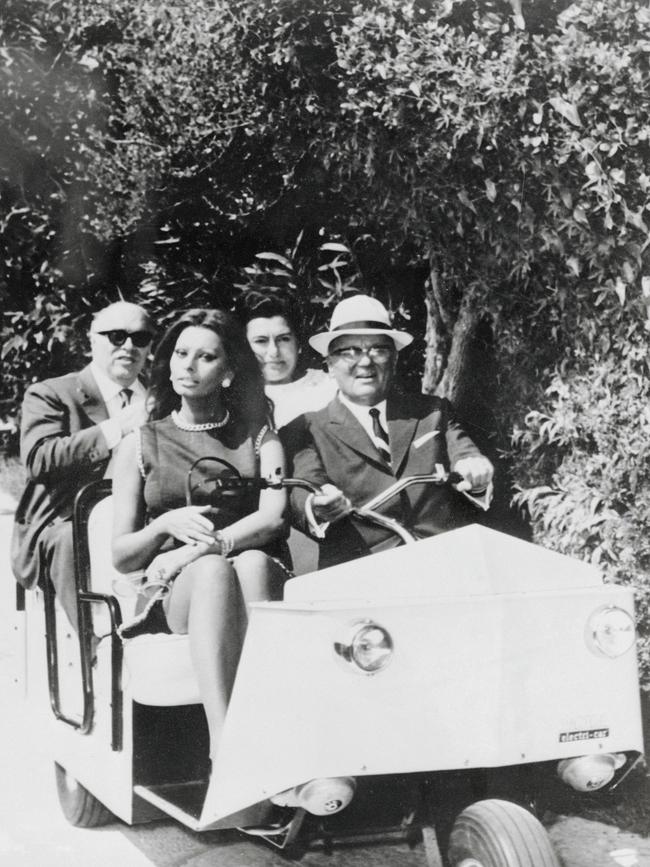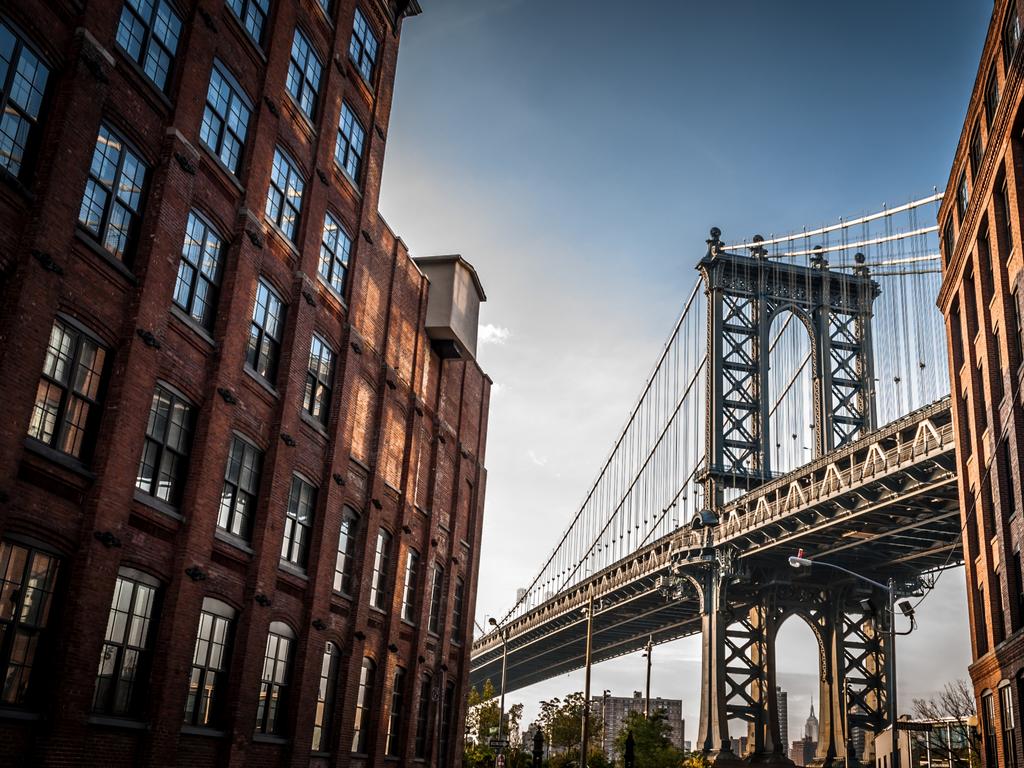Croatian Island retreat once visited by the Queen, Fidel Castro and Elizabeth Taylor
Everyone from the Queen and Fidel Castro to Sophia Loren and Elizabeth Taylor was invited to this verdant archipelago off Croatia. Now you can go too.

Residents of Istria, the verdant Croatian peninsula that juts into the Adriatic near Italy, love to dwell on their eccentric past. One cherished story involves the Venetian lover and adventurer Casanova. When he stopped at the port of Vrsar in 1744, he was surprised to find the town medic rush to the dock and invite him to a lavish breakfast. The good doctor, it turned out, wanted to thank Casanova for spreading venereal disease so widely on his last visit that his once-struggling medical practice was now flourishing. Another Istrian village, Kringa, takes perverse pride as the home of the first vampire, or strigun, called Jure Grando Ailovic. It’s said that in the 17th century he terrorised villagers until he was dug up in the cemetery and decapitated. Yet another village has a Gothic castle so densely coated in moss that it is called Pietrapelosa, Italian for “hairy stone”.

But it is an anecdote of more recent vintage that inspires my own excursion to Istria. During the Cold War, I’m told, the dictator of Yugoslavia, Marshal Josip Broz Tito, chose the Brijuni Islands as his annual holiday destination, turning them into his personal fiefdom. It seems a pleasant package for a historical quest; not only are the islands today dotted with Tito relics, they are protected as a national park for their sandy coves, lush forests and clear waters, as green as Listerine and darting with marine life.
And so I hop on a ferry from the mainland to the largest island, Veliki Brijun. We dock in front of the sprawling Istria-Neptun Hotel, which turns out to be a grandiose monument from the island’s first golden age, two generations before Tito, as a health retreat for European high society during the twilight of the Austro-Hungarian Empire. As I take a balcony room to lap up the old-world ambience, echoes of The Grand Budapest Hotel are inescapable. The state-of-the-art spa opened in 1902 with an Art Nouveau ballroom and heated indoor pool, luring a who’s who of intellectuals that included Richard Strauss, James Joyce, Gustav Klimt and Gugliemo Marconi. In its airy rooms, Thomas Mann conceived the plot for his classic novel set in a cholera epidemic, Death in Venice. Sigmund Freud stayed in the spring of 1914 with his associate Otto Rank. And a parade of Hapsburg royals holidayed at the elegant resort, including the luckless Austrian archduke Franz Ferdinand, whose assassination in Sarajevo in 1914 would precipitate World War I and doom the Austro-Hungarian empire and its ethereal beau monde.

The serenity of those gilded summers still lingers. The island is car-free, so I remain for three days to explore its forest trails by bicycle. I call in at such landmarks as a 1600-year-old olive tree surrounded by grazing deer, the ruins of a Roman villa next to a sandy cove, and the overgrown Basilica of St Mary, which was occupied by the Knights Templar in the 13th century. But soon I manage to focus on the sites from the island’s communist era, when it became Tito’s escape from 1949 to his death in 1980.
Although Croatians have mixed feelings about Tito, his memory on Brijun is lovingly preserved. My own knowledge of the dictator is vague, to say the least, so for a crash course, I visit the splendidly odd Tito Museum filled with faded photos of the strongman. Detailed displays inform me that, like a character in an adventure novel, he rose from poor goatherd to become a revolutionary firebrand, heroic Partisan leader against the Nazis (“Tito” was his nom de guerre), and finally authoritarian president, whose charisma sent him strutting the international stage as leader of the Non-Aligned Movement, an alliance of mostly developing countries that offered a path between the US and USSR. He chose the 14 lovely Brijuni Islands as his official residence for the six warmest months of every year, and he invited a parade of world leaders to visit, including Fidel Castro, Yasser Arafat, Muammar Gaddafi, Queen Elizabeth II and Indira Gandhi, who gifted the animal-loving Tito five elephants for his safari park on his estate.


Joining them were Hollywood movie stars, who sailed with Tito around the Mediterranean on his luxury vessel Galeb (“The Seagull”). Richard Burton and Elizabeth Taylor were guests when Burton played Tito as a young Partisan in the 1973 war film The Battle of Sutjeska. The American jazz singer Josephine Baker visited Tito, as did the Italian actors Gina Lollobrigida and (on several occasions) Sophia Loren.
By the 1960s, Tito’s personality had became outlandish. Like a B-grade Hollywood actor, he sported a fake tan, gleaming false teeth and overdyed hair. Sometimes, wearing a white safari suit and sunglasses, he would lead a tame leopard on a chain. He toured the islands on a speedboat with his wife, Jovanka, a pretty former resistance fighter 32 years his younger, and sat for photo shoots on the islet of Vanga, where he tended his garden and made wine in a mock-peasant life. And yet Tito’s charm was undeniable, fuelling a personality cult during the Cold War that had Yugoslavs sending him 25,000 letters a year. He was also internationally admired for facing down Stalin in 1948 and putting Yugoslavia on a relatively moderate “path to socialism” – a land where travellers from the Eastern bloc could find Western treats such as blue jeans and rock music LPs.

I track down the Cold War relics in between dreamy beaches. First is a chapel-like structure made of transparent plastic that displays Tito’s favourite car, a green 1953 El Dorado Cadillac presented by worshipful Yugoslav immigrants in the US. One afternoon, I clamber through the underbrush to a rusty iron fence for a glimpse of the so-called White Villa, the official waterfront residence where Tito hosted a grand political conferences in 1955 to sign the Brijuni Declaration that created the Non-Aligned Movement with India’s Jawaharlal Nehru and Egypt’s Gamal Abdel Nasser.
But then I find the most direct connection to Tito of all: an elderly parrot named Koki that still lives in a beautifully appointed aviary. The sulphur-crested cockatoo (a gift of the Indonesian president Suharto) even began to mimic Tito’s colourful peasant vocabulary, giving the eerie sense that he is channelling the Marshall. As well as teaching his young pet an array of unprintable curse words (a sign on his cage warns that Koki utters many “friendly” phrases, “but also those which we kindly ask you not to take personally”), Tito passed on some of his more intimate romantic musings. As I leave the aviary, Koki lets out one final outburst, “Volim Te, Sophia”, which I later learn is Croatian for “I love you, Sophia”, a passionate cri de coeur for the alluring Loren.

On my last morning, I discover that the laurels for the most surreal site on the island go to Tito’s safari park, which still operates in the island’s north. I cycle past zebras, ostriches and the last aged survivor of the five elephants given to him by Gandhi, named Lanka. At the park’s sun-dappled cafe, perched above the rocky shoreline with breathtaking water views, the tuxedoed waiter blasts Italian opera over loudspeakers to the few customers and puzzled animals. “Cappuccini with Puccini!” he declares.
What can I say but “Bravo”? And as I wander back to the ferry, I hope that the moderate spirit of “Istrianity” will continue to thrive in all its riotous eccentricity.
Tony Perrottet travelled at his own expense.
If you love to travel, sign up to our free weekly Travel + Luxury newsletter here.




To join the conversation, please log in. Don't have an account? Register
Join the conversation, you are commenting as Logout